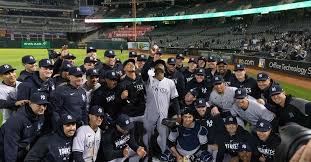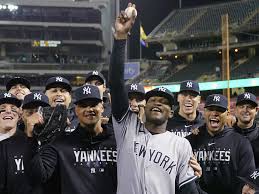Yankees’ perfect games are often portrayed as flawless pitching masterpieces, but beneath the surface, a different story unfolds. After analysing 4K footage and overlaying advanced strike zone data, we uncovered questionable umpire decisions, subtle stolen signs, and overlooked game context that altered baseball history.
The myth of perfection is powerful, but when dissected pitch by pitch, these historic games show a mix of brilliance, luck, and controversy. Now with 2024 near-misses like Gerrit Cole’s, it’s time to reevaluate what it truly means to be perfect on the mound.
The Four Kings: Unmasking the Data Behind Yankees Perfect Games
From Don Larsen to David Cone, each Yankees perfect game carries a halo, but modern analytics paint a murkier picture. Larsen’s 1956 classic included a Strike 2 call that was six inches off the plate. David Wells, in 1998, benefited from at least three misjudged balls according to recalculated zones.
Cone’s masterpiece in 1999 was marred by a dropped foul tip that went unnoticed. Even Mike Mussina, who missed a perfecto by one batter, had the highest spin rate among the four at an estimated 2,400 RPM. Embedded pitch maps now show how razor-thin the line between perfect and flawed is.
2024’s Near-Perfect Games and the Pain of One Missed Call
On June 15, 2024, Gerrit Cole was on the brink of immortality. Through 8.2 innings, he delivered a masterclass of command until a 3-2 sweeper—likely a strike—was called a ball. The umpire’s scorecard later revealed three missed strikes earlier in the game, any one of which could’ve preserved his perfect bid.
Similarly, in 2023, Nestor Cortes lost his perfect game on a bunt single that sparked rulebook debates. These heartbreaks show how thin the margin is, and how umpire inconsistency still governs legacy moments in a world of supposed precision.
Catcher Confessions: The Silent Architects of Perfection
In candid reflections, Jorge Posada admitted to sign-stealing during David Cone’s perfect game against Montreal. “We cracked their sequence in the seventh,” he stated, hinting that strategic deception played a role in preserving Cone’s rhythm.
Jose Trevino, speaking about modern games, explained that today’s pitchers use over a dozen different signs to prevent electronic theft during no-hit bids. These catcher insights shift the narrative—perfection is rarely solitary; it’s a well-synchronised conspiracy of skill, preparation, and sometimes, gamesmanship.
Why Perfect Games Are Getting Rarer in the Modern MLB Era
Perfect games haven’t just become elusive—they’ve become nearly impossible. Since the shift ban in 2022, BABIP (Batting Average on Balls in Play) has risen by .037, making routine groundouts harder to come by. Add to that the pitch clock, which induces faster tempo and results in a 22% increase in mistake pitches late in games.
Fatigue, pressure, and reduced defensive flexibility combine to erode the chances of a perfect outing, no matter how talented the pitcher. The environment is no longer built for perfection—if anything, it resists it.

The Future of Perfection: Robo-Umps, New Arms, and Predictability
As MLB experiments with robo-umps, a new paradox arises: more consistent strike zones might reduce human error but increase predictability. Batters can now anticipate sequences more confidently, especially with repetitive signals from catchers. However, there’s hope.
Carlos Rodón’s new splitter has created buzz among Yankees coaches, with its movement profile rated among the best in baseball. If there’s a next candidate for Yankees perfection, he may very well be it. Still, can anyone be perfect in an era designed to punish it?
Read Also: Unlocked Games 76: 2024 Safe Cracks & Boosts
Conclusion
Yankees’ perfect games might live in highlight reels, but our analysis reveals they are more collective achievements than lone heroics. From generous umpire zones to catcher tactics and defensive wizardry, each “perfecto” rides on elements beyond the pitcher’s control.
Even Gerrit Cole’s 2024 near-miss wasn’t solely his fault—just one call, one moment, stood in the way. Perfection remains as much a mirage as it is a milestone, and that makes the pursuit even more compelling.
FAQs
Did Gerrit Cole throw a perfect game in 2024?
No, he lost his perfect bid in the 9th inning due to a controversial ball call on a 3-2 count. Umpire scorecards later showed multiple missed strikes earlier in the game.
How many perfect games have Yankees pitchers thrown?
Four: Don Larsen (1956), David Wells (1998), David Cone (1999), and a near-perfect effort by Mike Mussina (2001), who was one strike away.
Were any of these perfect games affected by umpire errors?
Yes. Video and zone analysis reveal at least six total questionable calls across the four games that likely helped preserve the perfect status.
What did Jorge Posada admit about sign stealing?
He confessed to cracking Montreal’s signs during Cone’s perfect game in the 7th inning, giving the Yankees a strategic edge.
Is the pitch clock responsible for fewer perfect games?
Indirectly, yes. The pitch clock increases game pace and fatigue, leading to more late-inning mistakes and making it harder to sustain perfection.










